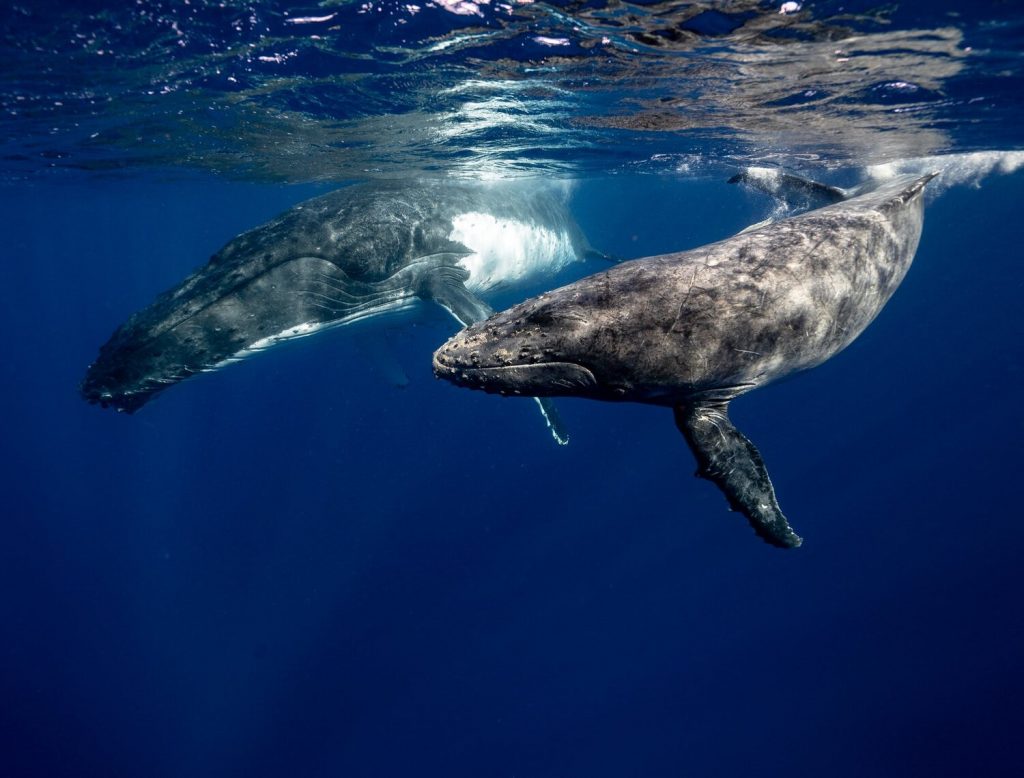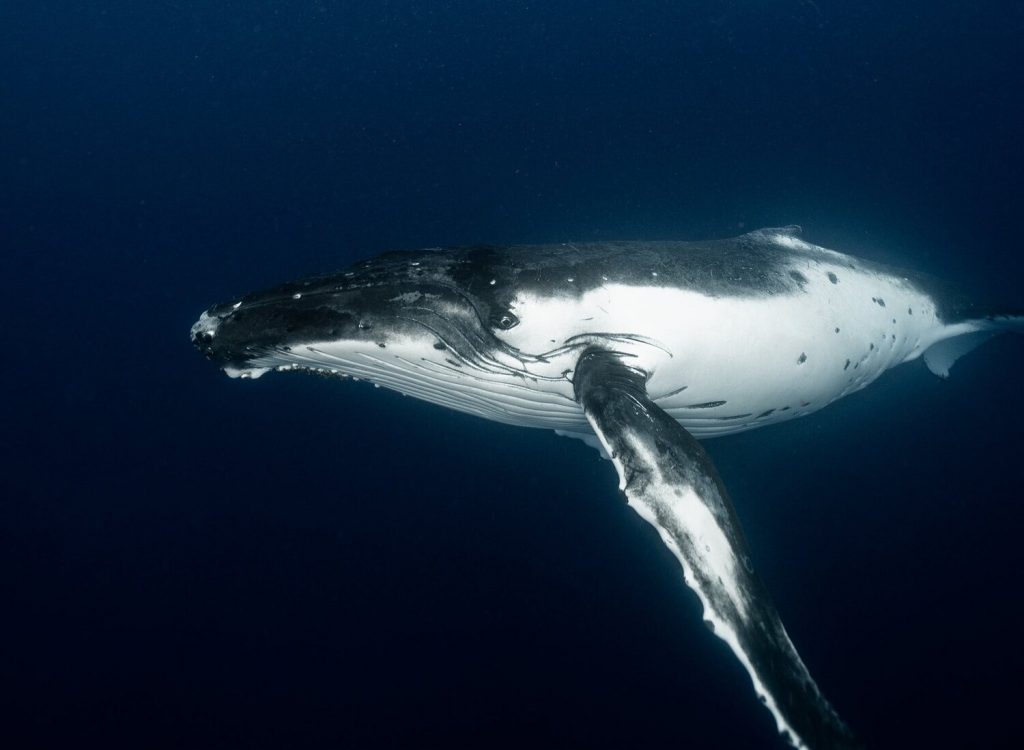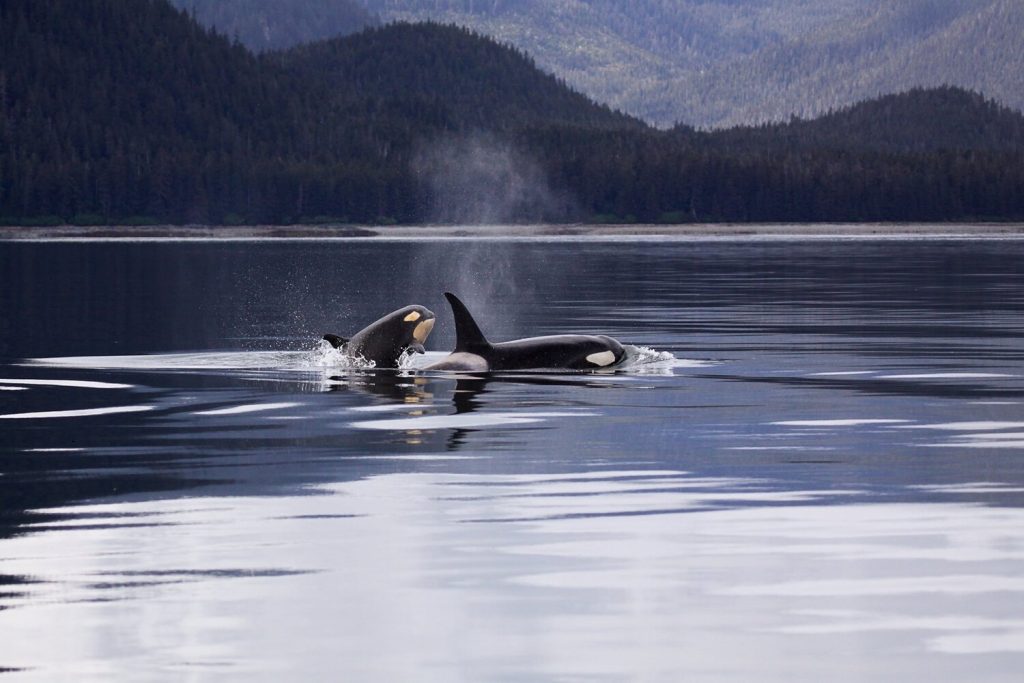Symphonies of the Sea
Written by Taylor Tsacoumis
Source : https://ali.fish/blog/symphonies-of-the-sea?rq=tsacoumis

Communicating underwater is challenging as light and odors do not travel well. But, sound moves 4x faster in water than air. As a result, most marine animals depend on vocalizations to communicate. A chorus of sounds fills the ocean, and a lot of this noise comes from whales. Whales have one of, if not the most, sophisticated form of communication ever existed. They are able to hear one another from hundreds or even thousands of miles apart, which is crucial because they are very social creatures that travel, live and hunt in groups called ‘pods’. Each pod has a unique ‘language’ that helps researchers identify where their pod originated.
Whales live throughout the world’s oceans, and play an important role in the overall health of the marine environment. There are 13 extremely large whales that are named the ‘great whales.’ This group is made of all baleen whales except for the Sperm whale. Each of these great whales removes an estimated 33 tons of CO2 from the atmosphere — a big contributor to climate change. Unfortunately, 6 of the 13 are classified as endangered due to overfishing from the whaling industry, habitat loss, entanglement, bycatch, and pollution. The blue whale, the largest animal ever known to have existed, was on the brink of extinction in the 1900’s due to commercial whaling.
There are two types of whale: baleen and toothed. Baleen Whales have baleen plates which are made out of keratin instead of teeth. This allows them to filter feed, catching prey such as krill, plankton and small fish. There are 15 species of Baleen whales, but the five that are known to sing are the Blue, Fin, Humpback, Bowhead and Minke. It is believed that whales sing to mark territory, look more attractive to potential mates, coordinate migration and communicate with their young.

Males sing low songs in hopes of finding a female mate, and these songs evolve over time to continue to impress the females. Each whale has a unique speed and pitch, similar to humans. When listening to whales singing for any length of time, you will find repeated patterns in them made up of units, phrases, themes which together make a song. In one recorded session, a humpback whale sang for 22 hours straight. While each pod has their own language, phrases can be exchanged amongst different pods. It has also been seen that when two pods interact often they have developed some of the same phrases as each other.
Toothed whales have teeth and are known to actively hunt fish, squid and other sea creatures. There are 77 species of toothed whales, including the Beaked whale, Sperm whale and Killer whale. These whales use echolocation by making clicking noises, when the sound wave bounces off an object the wave returns to the whale and it is able to identify the shape and distance of the object. Clicks lack the complexity of a song but still have been observed during social interactions, suggesting they may also have a communicative function.

The Sperm whale is the loudest whale with the ability to vibrate a human body to death with its clicks. These whales are extraordinarily evolved, with a brain that is 6x larger than ours. They have a Neocortex which is responsible for future planning and language. They also have spindle cells, which are long, highly-developed brain structures responsible for compassion, love, suffering and speech. Spindle cells are what differentiates humans from apes.
Scientists are currently working to decipher what the whales are singing with hopes of learning to communicate with these gentle giants. Unfortunately, the oceans are becoming noisier due to increased commercial ship traffic, oil drilling, and SONAR use. Noise pollution interferes with whale communication and can lead to disorientation or inability to migrate or find food. It is proven that the closer to large sources of noise, the less whales sing. In order to protect whales we need to reduce noise pollution, especially along whale mating routes and critical habitats.
By Taylor Tsacoumis